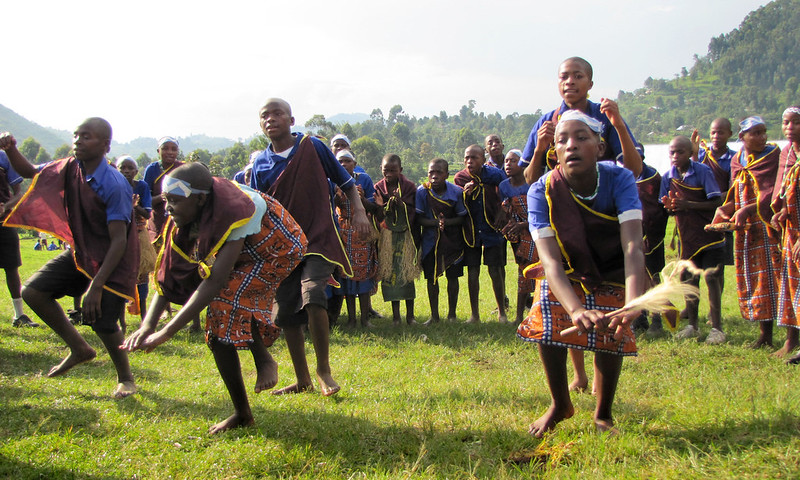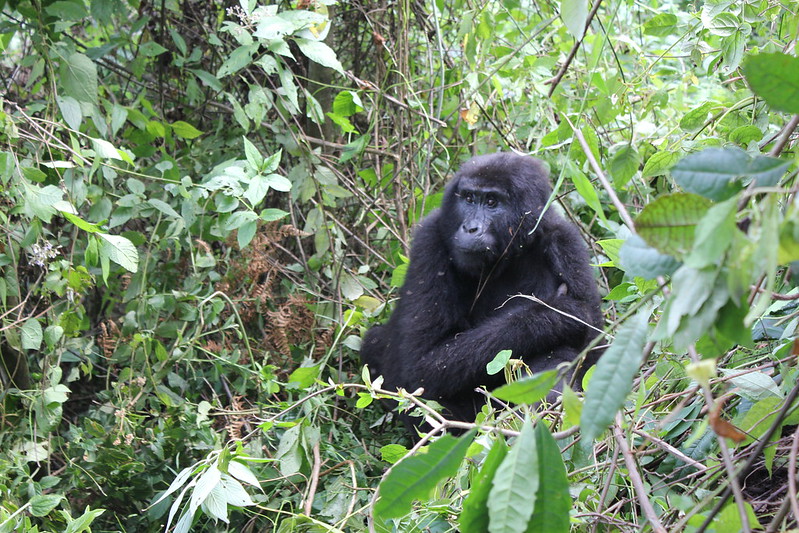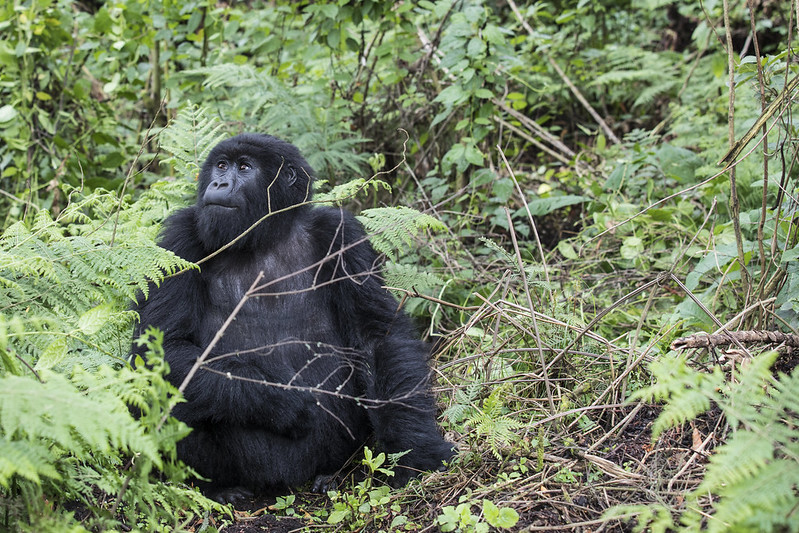
Rubuguri Village Walk In Bwindi Forest Park
Rubuguri Village Walk In Bwindi Forest Park.
Located in the lower lands of Bwindi Impenetrable and positioned between the Rushaga and Nkuringo sectors of the national park, Rubuguri Village Walk is located in the southern part of Bwindi Forest Park. Surrounded by rolling hills, Rubuguri Village is home to a sizable population. The village can only be reached by road. The city of Rubuguri is located in the Kisoro District of Kirundo Sub County. Kihihi, Rubanda, Kabale, Kanungu, Kambuga, Cyahafi, and Rubale are the cities that encircle it.
BWINDI FOREST PARK’S RUBUGURI VILLAGE WALK
Bwindi Impenetrable National Park, a UNESCO World Heritage Site, is situated in the Kanungu District in southwest Uganda, near the Rift Albertine and Democratic Republic of the Congo borders. Bwindi is 321 square kilometers of afro-montane and lowland woods. The park’s primary attraction is its more than 400 mountain gorillas, who reside there naturally. In addition, Bwindi is home to more than 300 tree species, 120 mammal species, 11 primate species, 360 bird species, 200 butterfly species, and more.
A stroll around Rubuguri Village in the Bwindi Forest Park is an additional activity that can be done in Bwindi besides gorilla trekking. You will encounter the residents at their traditional homesteads on the Rubuguri village trek, which takes you past verdant marshes, undulating hills, and sheer cliff cliffs. The Rubuguri Village Walk is managed by the Nkuringo Cultural Center (NCC). Because the Rubuguri village walk includes passing homesteads, visitors will engage in everyday activities such as farming, feeding and caring for animals, seeing gardens and plantations, and doing housekeeping like cooking and food preparation. Sometimes visitors even join the residents for meals.
On the Rubuguri village walk, visitors will come across kind, welcoming residents who will make the visitors feel at home. Visitors will be able to learn more and discover the people’ past and contemporary ways of life as a result of the interaction chances this will create. Spending time with locals will teach tourists more about their traditions and ways of behaving.
The indigenous people welcome visitors to the Rubuguri village tour by performing traditional songs and dances. The prehistoric way of life of the natives will be described to you through folklore, myths, and riddles. This occurs when visitors and locals have direct conversations.
The Batwa were the first people to live in the forest before moving beyond the park. During the village trip, visitors will meet the Batwa people, who will share stories about their forest lifestyle. Traditional dances and music will be performed, along with other events like showcasing one’s skills in hunting, fruit picking, crafting, and honey harvesting, as well as visiting the blacksmith and herbalists who employ local herbs. Because they may contribute while they are being instructed, tourists will consequently learn a lot. investigating and learning about the practices, traditions, civilizations, and way of life of the Batwa people.
An important component of the trip is touring the nearby schools while strolling through the village of Rubuguri. This means visiting schools like St. Peter’s Primary School, where guests enjoy engaging with the teachers and students, who greet them with warmth and offer some entertainment. This is communicated through the Bakiga’s traditional songs and dances, which include a Kikiga dance that involves jumping high and stomping the ground.
Visitors can observe some of the local arts and crafts projects, which include making a range of objects including baskets, bags, huts, and mats, along the Rubuguri Village Walk in Bwindi Forest Park. Visitors will have the opportunity to participate in their creation as they will be instructed on how to make them. Additionally, the community will profit financially since tourists would purchase the crafts. You can enjoy breathtaking views of the terraced hills, verdant marshes, and typical African homesteads while taking a walk around the settlement of Rubuguri.
WHICH TIME OF YEAR IS BEST FOR THE RUBUGURI VILLAGE WALK?
It has long been known that Rubuguri village treks can be taken at any time of day or year. However, December, January, February, June, July, August, and September are the best times to do it. These are referred to as the dry months or seasons, and because the park is a rainforest, there is little to no precipitation during these times. Additionally, travel is easy at this time due to the limited foliage and the clear, convenient, and passable roads and pathways.
However, during the months of March, May, October, and November, when it rains a lot, one can decide to take a stroll around the village of Rubuguri. It should be mentioned that the park’s roads and passages are in bad shape at this time of year; they are muddy, slick, wet, and dangerous. Hiking becomes challenging as a result.
 THE RUBUGURI VILLAGE WALK’S HIGHLIGHTS
THE RUBUGURI VILLAGE WALK’S HIGHLIGHTS
Seeing the inhabitants’ traditional homesteads
Communication between visitors and residents
Investigating and learning about the natives’ customs and cultures
Visiting nearby schools and various initiatives
observing the various sights while hiking.
SUGGESTIONS FOR
Organizing a Visit to Rubugur Village
One ought to be in good mental and physical health. Given that it involves walking a distance, this is accurate.
Put on a long-sleeved shirt or sweater, long pants, hand gloves, and lightweight hiking boots that won’t be heavy to carry while walking in order to stay warm.
Consider the duration of your visit. For this, determining the best time of year is necessary.
The essentials, such as enough food, snacks, water, sunscreen, bug repellent, caps, sunglasses, and a camera, should be packed in a water-resistant backpack.
You might want to think about hiring a porter to help you carry your heavy bags.
Make bookings or work with the top tour operators, such Experiya Tour Company, for assistance with the tour’s specifics.
ADDITIONAL EVENTS THAT TAKE PLACE IN BWINDI IMPENETRABLE NATIONAL PARK
Trekking with orangutans is the park’s primary visitor attraction. There are more than 20 habituated gorilla families that can be visited daily in the park’s sectors (the northern Buhoma region is home to five gorilla families, the eastern Ruhija sector is home to four gorilla groups, the southern Rushaga sector is home to eight gorilla families, and the southern Nkuringo sector is home to three gorilla groups).
Bwindi Impenetrable Forest Rubuguri Village Walk in Bwindi Forest Park
The following gorilla families are available for trekking in the different sectors: The Rushegura Group
Mubare Group and Muyambi Group
The Habinyanja Group
Gorilla Katwe
The Nkuringo group hosts the following groups: the Bushaho family, the Christmas group, the Bitukura group, the Oruzogo group, the Kyaguliro group, the Mukiza group, the Nshongi family, the Bikingi group, the Mishaya group, the Kahungye group, the Busingye group, the Bweza group, the Mucunguzi group, and the Rwigi group.
Trekking these families requires a gorilla trekking permit, which costs 700 dollars for foreign non-residents, 600 dollars for foreign residents, and 250 000 shs for East African people. Every day, eight persons must hike with each family, and visitors are only permitted to spend an hour with the gorillas.
Gorilla habituation is the process of finding accustomed gorillas on foot. The southern section of the park, which includes the Rushaga sector with the Kutu gorilla family and the Nkuringo sector with the Posho gorilla group, is where this activity is conducted. There are only eight habituation licenses available per day, and visits to a particular gorilla family are limited to groups of four. The permit, which costs USD 1500 for foreign non-residents, USD 1000 for foreign residents, and Ugx 750,000 for East African natives, allows the traveler to spend four hours with the gorillas.
observing birds. Among other birds, Bwindi’s waterfall, swamp, and bamboo areas are home to the African sooty flycatcher, African paradise flycatcher, African goshawk, African pygmy kingfisher, black bee eater, dwarf honeyguide, African green broadbill, black-billed turaco, Cassin’s grey flycatchers, African black ducks, great blue turaco, and handsome francolin. This can be found via the Kashasha river route, the waterfall trail, the River Ivy trail, and the birdwatching trails.
Monitor primates. Eleven primates, including chimpanzees, baboons, galagos, blue monkeys, red-tailed monkeys, and white and black colobus monkeys, can be tracked at Bwindi in addition to the primary attraction, the mountain gorillas.
Discovering the park’s many hidden attractions, such as its different vegetation zones and wildlife, which includes gorillas, side-striped jackals, clawless otters, civets, wild pigs, warthogs, giant forest hogs, forest elephants, bush bucks, duikers, and buffaloes, can be done during daytime or nighttime game viewing or drives. and the many kinds of birds, reptiles, amphibians, and trees. Other pursuits consist of:
Taking a boat ride
Biking in the mountains
Nature walks in forests
camping as well as cultural excursions.
LOCATIONS TO HIKE ON THE RUBUGURI VILLAGE WALK IN BWINDI IMPENETRABLE NATIONAL PARK
Depending on the class, there are many different lodging options available, ranging from luxury to mid-range to low-cost. Crested Crane Bwindi, Engagi lodge, CPTH gorilla conservation camp, Nshongi gorilla camp, Ruhija community rest camp, Ruhija gorilla friends resort, Mutanda Eco community center, Bwindi view Bandas, Bwindi guest house, Bwindi back packers lodge, Bwindi forest lodge, Buhoma community Banda, and Broadbill forest camp are all included in the budget range.
Among the midrange lodging options are Gorillas Mist Camp, Eco Marvels Gorilla Resort, Gift of Nature, Bwindi Jungle Lodge, Lake Kitandara Bwindi Camp, Gorilla Valley Lodge, Lake Muhele Gorilla Lodge, Buhoma Community Haven Lodge, Cuckoo Land Tented Lodge, and more.
Mahogany Springs, Ichumbi Lodge, Nkuringo Bwindi Gorilla Lodge, Buhoma Lodge, Bwindi Clouds Lodge, Chameleon Hills Lodge, Sanctuary Gorilla Forest Camp, Silverback Lodge, Rushaga Gorilla Safari Lodge, Mahogany Springs, and Trekkers Tavern Cottages are among the upscale lodging options.


